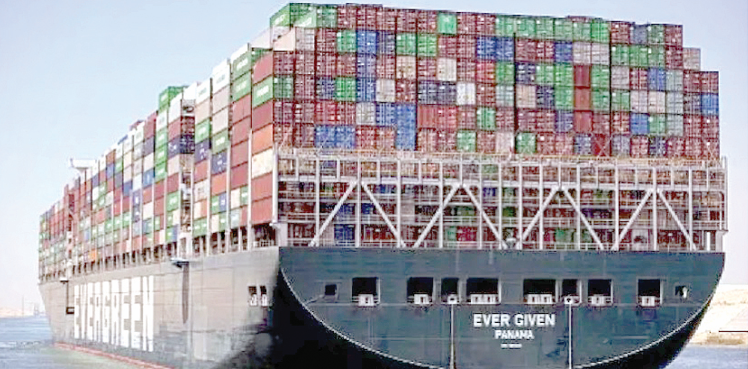Hope for the fisherfolk as hyacinth dissipates

A stroll along Nyakach Bay in Winam Gulf reveals the everyday scene that fishermen are now getting used to.
A lush green weed covering large swatches of the lake and concealing Osodo beach.
For one visiting the place for the first time, it is easy to dismiss it as a good sign of nature at its best, but for the fishermen, the weed represents doom and gloom. Whenever the weed covers the lake, fish stocks dwindle.
Kenya Fisheries department says this is a result of the weed depleting oxygen from the aquatic plants and animals, threatening biodiversity.
This is the hyacinth weed, a major invasive plant species that continues to disrupt activities on Lake Victoria for several decades and threatens the local ecosystem.
First spotted in the lake in the early 1980s and attempts to remove the weed have all hit dead ends as it continues to reappear frequently on the lake.
At Osodo beach, three fishing boats abandoned by fishermen were decaying with part of the weed inside it.
The fishermen operating the boats abandoned them after being unable to access the lake because the weed had blocked their boats.
The beach is among those that the government had planned to develop to improve maritime transport.
The weed has also concealed several bays and destroyed jetties around the lake.

And its effect is now being felt by communities living around the lake and the fishing community who rely on the jetties and the beaches for transport.
Weed in the lake
“The weed has contributed to the struggle that the fishing industry is facing. As fishermen, some of us have been forced to migrate to other beaches where the weed is less,” says Fred Ochieng.
He says whenever the weed strikes, they barely make Sh2, 000 in profits through each fishing expedition. In the past, he said, they would make even Sh30,000 for every boat.
Ochieng adds that he is among the fishermen who are optimistic that authorities would eradicate the weed from the lake to improve transport and fishing in Lake Victoria.
An investigation by PD Weekendi established that there are fresh efforts that authorities are working on with an aim of addressing the perennial problem of the destructive weed.
The efforts are grounded on mechanisation as the primary plan to eradicate the weed.
For more than four decades, authorities have made several attempts to eradicate the weed, spending millions in the process with little success.
In the 1990s an attempt by an American company to remove the weed mechanically flopped after their water hyacinth harvester broke down.
Another attempt in the same period that saw the government through Kenya Agricultural Research Institute (KARI) introduce beetles from Brazil and other countries to feed and destroy the weed also collapsed.
But authorities are not giving up just yet. Efforts have now turned to mechanical removal of the weed.
And even as it covers some 1,300 hectares of the lake in Nyakach Bay, Homa Bay, and Scarters gulf, according to the latest survey by Kenya Marine and Fisheries Research Institute, the focus is shifting on the fresh efforts to eradicate it.
Efforts undertaken
The efforts are being undertaken by different entities including the Ministry of Environment as well as the East Africa Community through the Lake Victoria Basin Commission (LVBC) which is undertaking the Lake Victoria Integrated Water Resources Management Programme (LVB IWRM) program.
The project which runs until 2023, according to LVBC aims to improve the lake’s water quality by reducing effluents into Lake Victoria.
Scientists attribute the increased coverage of the weed to the pollution which deposits nutrients that encourage the growth of the weed in the lake.
However, statistics by another agency, Kenya Marine and Fisheries Research Institute (KMFRI) covering the last three years indicate that the extent of coverage of the weed has been declining over the years.
The statistics indicate that the coverage of the weed has been declining in the last three years and currently covers about 1,300 hectares.
Christopher Aura, a researcher and deputy director of Freshwater Systems Research at KMFRI said in the next five years, water hyacinth in the lake will continue to dwindle because of the improved government efforts in terms of management and control.
He noted that part of the efforts being adopted to eradicate the weed includes manual removal.
“The government has embarked on various efforts to help control the lake including agricultural practices which help in minimising nutrient flow in the lake, afforestation and using fishermen and NYS officers to remove hyacinth manually from the lake,” Aura said.
Experts are also optimistic that improved activities on the lake as a result of the rehabilitation of Kisumu port are bound to break the growth circle of the weed and reduce its coverage.
An official who works with Kenya Ports Authority who asked not to be named said the removal of the weed is part of the wider strategy to revamp lake transport.
“There are plans to build smaller ports in the Nyanza region and some of those places are affected by water hyacinth, which makes the removal of the weed a priority,” said the official.
Affected residents
Residents affected by the weed are waiting to see if the latest attempts will bear fruit after similar efforts in the past did not make any success.
Tom Guda, the national Beach Management chair said the weed continues to affect fishing activities.
“Up to now, landing is still not easy and when people are not landing, there are no revenue collection and traders too have to travel for long distances to other landing sites that are accessible making them incur a lot of cost on boda boda,” he said.
However, at Dunga beach, Kisumu, a group of innovative youths have seen an opportunity and are using the weed to make biogas.
Enock Owuor saw his community living around the beach struggling to control the stubborn water hyacinth but has turned the misfortune into a source of power.
The enthusiastic environmentalist spent several months studying how best the weed could be utilised positively to transform the lives of the people.
His main focus was the production of biogas “I have found a new use for the weed, which has caused trouble along the shores of Lake Victoria for more than 20 years,” he says.












